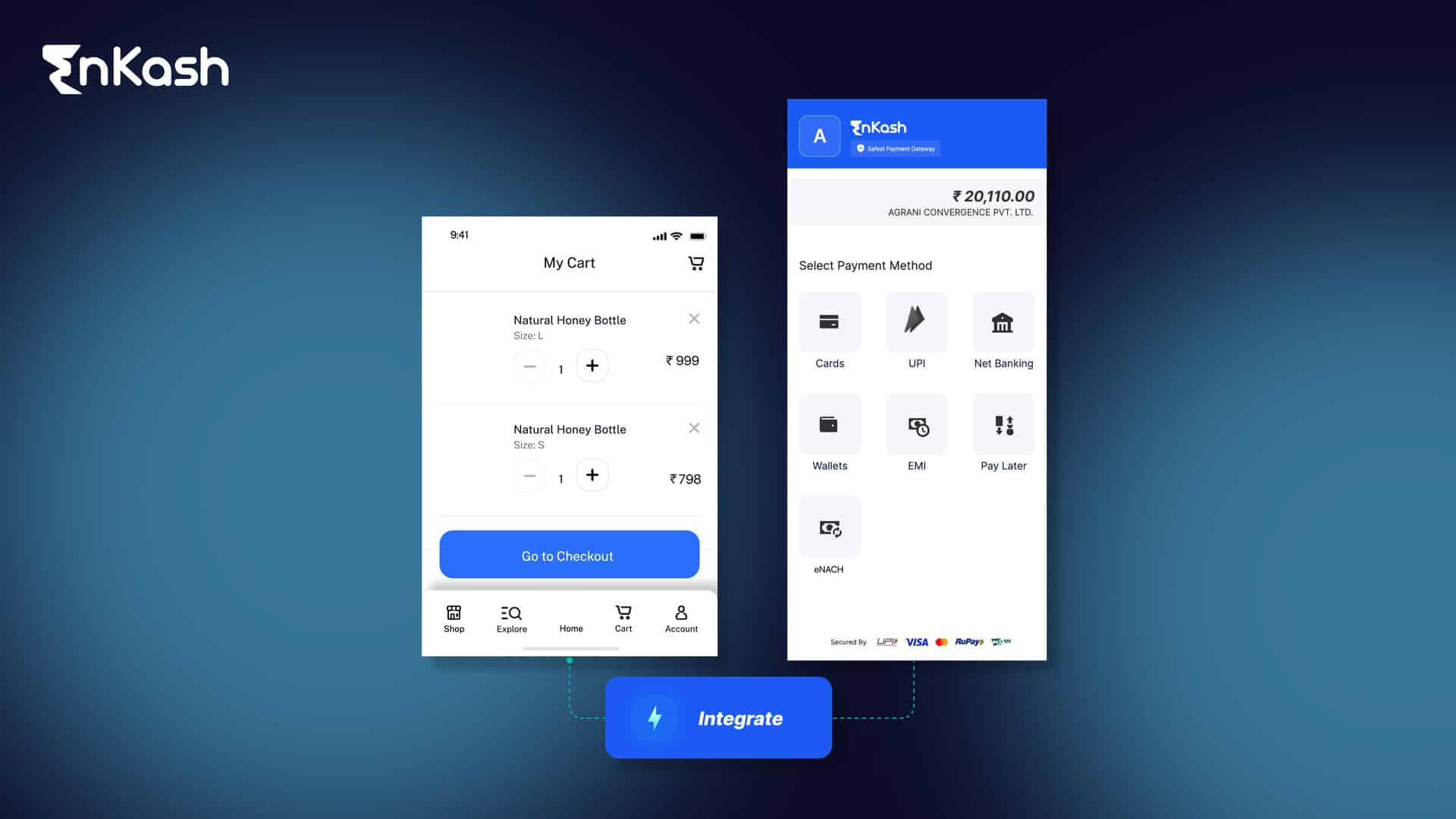The Goods and Services Tax Identification Number is a significant number that must be obtained by any business as it falls under the Goods and Services Tax system in India. It is not a mere registration number for businesses, as it helps them to achieve legal compliance, make payment easy for various taxes, and get input tax credits. In this comprehensive guide, you will learn what the GSTIN number means, how many digits in a GST number, how to get a GSTIN number for businesses, eligibility criteria, and everything else that will help businesses navigate GSTIN registration easily.
What is GSTIN Number?
The Goods and Services Tax Identification Number, or GSTIN, is an alphanumeric identifier issued to registered taxpayers under the GST system. It allows tax administration to monitor and coordinate national taxes so that firms might have compliant transactions as well as claim tax credits. A GSTIN number is more than a number for registration; it’s essential for claiming input tax credits, issuing GST invoices, and consequently being compliant with GST laws.
Read more: Search GST Number
GSTIN Number Format and Structure
A GSTIN number is a 15-character code designed as a structured number that encapsulates information specific to the business. Here is the detailed breakdown:
- The first 2 digits represent the state code according to the Indian Census. For example, 01 is the state code of Jammu & Kashmir, and 29 is the state code of Karnataka.
- The next 10 characters are the Permanent Account Number (PAN) of the business entity or individual.
- The 13th character represents the entity’s number to differentiate GST registrations under the same PAN in one state.
- The 14th character is typically represented as ‘Z’ by default.
- The 15th character is the check code (alpha or numeric) used to detect errors.
For example, a GSTIN number may look like 29AAGCR4375J1ZU, where “29” is the state code, “AAGCR4375J” is the PAN, “1” is the entity code, “Z” is the default character, and “U” is the check code.
Why is GSTIN Important for Your Business?
A GSTIN number is a fundamental requirement for legal and efficient operation in India. Here’s why you need a GSTIN:
Legal Compliance and Credibility
A GSTIN number establishes credibility, making the business more attractive to the customer, supplier, or even a partner who likes doing business with GST-registered entities. For many industries, especially those transacting interstate or through electronic means, GSTIN is an essential requirement and proves a credible business entity.
Claiming Input Tax Credit (ITC)
The main advantage of GSTIN registration is the ability to claim ITC. It enables a business to reduce the overall tax burden by allowing them to subtract the amount of tax paid on their purchases from their total GST liability. Businesses without GSTIN must pay extra while purchasing goods from GST-registered suppliers.
GST-Compliant Invoicing
A business is allowed to print GST-compliant invoices with the amount of tax levied under a GSTIN. Proper invoicing is necessary for return filing, claiming ITC, and transparency in transactions. It prevents penalties or complications during audits.
Easy Access to E-Way Bills and E-Invoicing Systems
A GSTIN-registered business can issue e-Way Bills for movement across state borders. The use of an e-Way Bill, therefore, assures a legal and GST-compliant movement of goods while also easing logistics. Every invoice issued must be uploaded onto the GST portal. Thus, invoices get real-time validation and authenticity.
Market Expansion and Interstate Operations
GSTIN facilitates business functioning without the requirement of multiple tax registrations. It becomes easier to partner with other GST-registered businesses because they will require your GSTIN number to ensure that the ITC claims are valid, which enables a wider market reach and better operational flexibility.
Access to Government Tenders and E-Commerce Platforms
Many government tenders and large e-commerce platforms require businesses to be GST-compliant because some government incentives and benefits are available only for GST-registered companies.
Read more: GST State Code List
Eligibility Criteria for GSTIN Registration
It is significant to know about eligibility for GSTIN since not every business needs to register. However, voluntary registration will still offer benefits even for businesses below the threshold.
Turnover Threshold
Businesses earning more than ₹20 lakh need GSTIN registration. The threshold amount is ₹10 lakh in special category states like North-Eastern states and hill states, considering the respective regional tax policies.
E-Commerce Operators and Aggregators
E-commerce operators selling goods or services online or through other platforms, irrespective of turnover, should register under the GST regime.
Interstate Suppliers
GST registration for business entities engaged in inter-state supply of goods or services is compulsory, without regard to the turnover being ₹20 lakh or less.
Businesses Under Reverse Charge Mechanism (RCM)
Some businesses pay GST on the Reverse Charge Mechanism, meaning the recipient pays instead of the supplier. Consequently, such businesses are expected to get registered for GST irrespective of their turnover.
Casual Taxable Persons and Non-Resident Taxable Persons
Casual taxable persons, such as temporary stalls or seasonal businesses, are mandatorily required to register under GST if they make or anticipate taxable supplies. Normally, a deposit is made equivalent to their estimated tax liability during the period of operation.
Non-resident taxable persons, such as foreign businesses selling goods and services in India, are mandated to pay the new tax levied here irrespective of turnover or period of operation.
Voluntary Registration
Voluntary registration under GST can be availed of by businesses below the threshold as required. Under this, they can avail of ITC on their purchases, gain credibility, and issue GST-compliant invoices to clients that demand them.
Special Exemptions
Certain individuals and enterprises are not required to register themselves under GST. Examples include farmers who sell raw agricultural commodities.
Read more: Types of GST Returns
Step-by-Step Guide on How to Get GSTIN Number
The process of getting a GSTIN involves online registration, filling out the application form, submitting required documents, and the verification process. Check out the detailed step-by-step registration process.
Part A: Preliminary Steps for Registration
Have a look at the detailed steps for the registration:
- Visit the GST Portal: Open your browser and visit the official GST portal at www.gst.gov.in. Third-party websites may charge you a fee for the service and compromise your data.
- Choose ‘New Registration’: Now, click the ‘Services’ tab and then ‘Registration,’ then ‘New Registration.’ This takes you to the registration form.
- Fill out Basic Details: You will be required to provide your PAN number, email address, mobile number, and state.
- Complete OTP Verification: After filling in the details, an OTP will be sent to your registered mobile number and email. Provide the OTP for verification purposes.
- Receive Temporary Reference Number (TRN): Once verified, you will receive a TRN.
Part B: Completing the Registration Application
After registration, complete the application process by following the below-mentioned steps:
- Log in using TRN: Revisit the GST portal, click ‘New Registration’ again, and this time select the option of TRN. Put your TRN and captcha code to open your saved application.
- Fill Out Business Information: Provide all details about your business, such as the legal name as per PAN, the principal place of business, the nature of business activity, and additional places of business if any. Additionally, an authorized signatory who will carry out the responsibility of the business related to GST shall also be assigned. He or she could be the owner of the business or any authorized representative.
- Upload Required Documents: You will need to upload several documents with your application.
- Verification and Submission: After filling out all the details and uploading all the required documents, you can check and apply with any of the following options:
- Electronic Verification Code (EVC): An OTP is sent to the registered mobile number or email.
- Digital Signature Certificate (DSC): A digital signature is required for companies and LLPs.
- E-Sign: An Aadhaar-based electronic signature, which requires OTP verification on the mobile number linked to Aadhaar.
After submission, an Application Reference Number will be issued to you, and with this, you will be able to track the status of your registration.
- Receive GSTIN and GST Registration Certificate: The GST application is verified by tax authorities. The total duration of this process may require 3-6 working days. During such times, you can access the status of your application via its ARN. After acceptance, a GST Registration Certificate will be issued to you with a unique GSTIN. You may download this certificate from the GST portal.
Read more: Types of GST
Documents Required for GST Registration
All the documents mentioned in the section above are required for the identification of the business and to give credibility so that the application can be processed smoothly. To avoid delay, make sure you have the following documents in hand before proceeding with GST registration:
- PAN Card of the business or proprietor
- Proof of Business Registration (e.g., Certificate of Incorporation for companies or Partnership Deed for partnerships)
- Address Proof
- Bank Details, including a cancelled check or bank statement
- Digital Signature Certificate (mandatory for companies and LLPs)
Types of GST Registration
India’s GST system supports different kinds of businesses by providing various types of GST registration. The right kind of registration can help businesses comply with GST laws and optimize the tax benefits based on their particular operational model. Here are the details:
Regular Taxpayer Registration
This category applies to most standard businesses and does not apply to any deposit or advance tax payments. Under this category, the following businesses fall:
- Businesses with an annual turnover of more than ₹20 lakh in all states except some special ones have to obtain themselves registered as regular taxpayers.
- GST registration for regular taxpayers does not have an expiry date and can be continued as long as desired.
- They can claim an ITC on GST paid on purchases while setting off the tax liability against sales.
- Now, regular taxpayers need to file the returns monthly or quarterly, depending upon the type of business and annual turnover.
Composition Taxpayer Registration
The composition taxpayer registration is for small businesses with limited turnover, thus providing simplified compliance. Key features include the following:
- For businesses with turnover up to ₹1.5 crore, in all states except for some special ones where the limit is up to ₹75 lakh.
- Under this scheme, taxpayers pay a fixed rate of GST on their turnover, ranging from 1-5%, according to the industry type to which it belongs, and not on each sales transaction.
- Composition taxpayers cannot avail of the ITC, which is given at a reduced rate.
- All businesses in this category do not require sending monthly returns but rather submit quarterly returns.
Casual Taxable Person Registration
It applies to firms that do not operate continuously but temporarily operate in a state. Casual taxable persons include those businesses that have stalls, exhibitions, or seasonal shops. Here’s what makes this category special:
- A casual taxable person has to pay an advance deposit, which is equivalent to the estimated GST liability for the period of registration.
- Registration is only for a short period (90 days), and further registration can be obtained in case of need.
- Like normal taxpayers, they would be eligible for input tax credit, as long as they comply with the time limit during the operational period.
- They need to return within their valid registration time.
Non-Resident Taxable Person Registration
This category is for foreign businesses and individuals that sometimes supply goods or services in India but have no permanent place of business in the country. Key characteristics include:
- For a non-resident taxable person, he or she is required to register for GST and pay advance deposit amounts to his or her estimated GST liability for the registration period.
- It is valid for 90 days and can be renewed if the business is going to continue beyond that period.
- Taxable non-resident persons must file returns for the period of registration and shall not be eligible to take ITC.
Read more: Credit Note in GST
Conclusion
GSTIN is a compulsory registration for businesses in India, as it will enable the business to be operated legally, simplify tax compliance, and add credibility to the market. With this step-by-step guide on how to get GSTIN number and the above tips and eligibility criteria, you can easily register for the process and take full advantage of the GST system. Stay updated, crosscheck GSTIN every time, and enjoy a smooth GST tax structure with its advantages.
FAQs
What are the consequences of not registering for GST if my business exceeds the threshold limit?
If your business crosses the annual turnover threshold and you do not register for GST, you may face penalties. Non-registration will attract a penalty of 10% of the tax amount payable (minimum INR 10,000) or even 100% if the authorities hold that there is tax evasion.
Can I cancel my GSTIN if I discontinue my business?
Yes, in case you are closing your business, you can apply for cancellation of GSTIN. You can go to the GST portal, click on the ‘Services’ tab, and select ‘Application for Cancellation of Registration.’ After verification, the GSTIN will be deactivated.
Is it possible to correct errors in my GST registration after submission?
Yes, there is an option to update the details of your GST registration on the GST portal through an amendment request, where you can change your address or business contact information. You may need a new registration in case of a fundamental change in the structure of the business.
Can I have multiple GSTINs for the same business?
Yes, if your business entity has a presence in more than one state, you must obtain a different GSTIN from each state in which your business has a presence. And while it will be registered to your PAN, you will have a different code for that state.
How much time does it take to get a GSTIN after applying?
After submitting the application form and all the required documents, the GST authorities generally take 3 to 7 working days to verify and approve registration.
Can I verify a GSTIN before entering into a transaction?
Yes, verification of the GSTIN before a transaction ensures non-fraudulent practice. You can verify with Clear GSTIN verification or access the GST portal. Check the authenticity of your GSTIN, the correct name of your business, and the status.
What happens if I enter an invalid GSTIN in my tax returns?
In case of entry of invalid GSTIN, input tax credit will be rejected, and the wrong tax will be filed along with penalties. Therefore, verify GSTIN details before using them in invoices or returns to avoid such errors.
Is it mandatory to display GSTIN on invoices and business premises?
Yes, it is mandatory to mention the GSTIN on all tax invoices issued by a registered business. Also, the GSTIN must be displayed at all places of business, including the primary and additional business locations.
What documents are required to apply for a GSTIN number?
Key documents include the PAN of the business or owner, the Aadhaar of the authorized signatory, proof of business address, bank account details, and business registration certificate or partnership deed in case of a partnership.
How do I track the status of my GST registration?
You can track the status of your GST registration application by using the ARN, which is the Application Reference Number. To do so, you can go to the GST portal, click on ‘Services’ > ‘Registration’ > ‘Track Application Status,’ enter your ARN, and view the current status.













